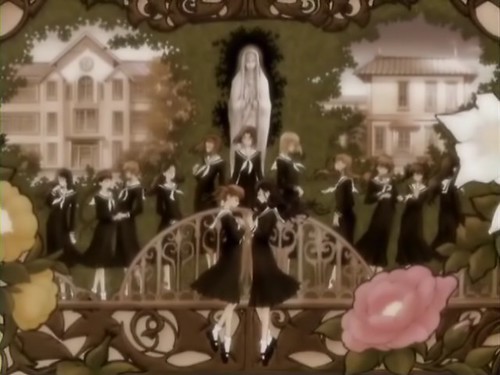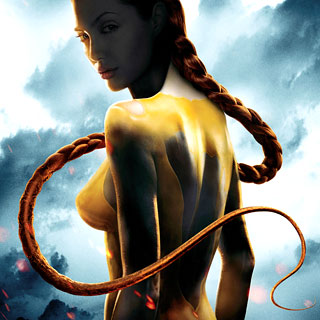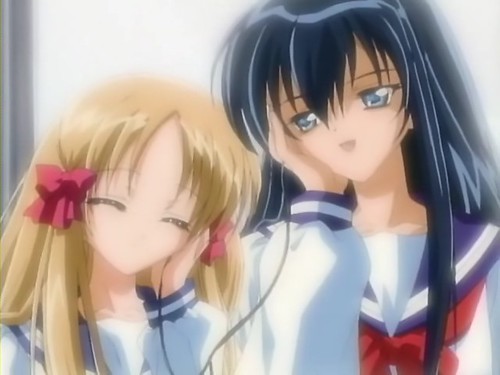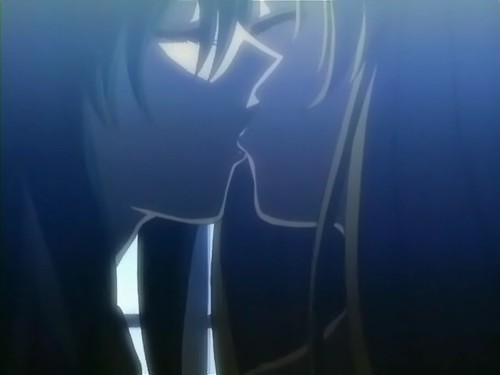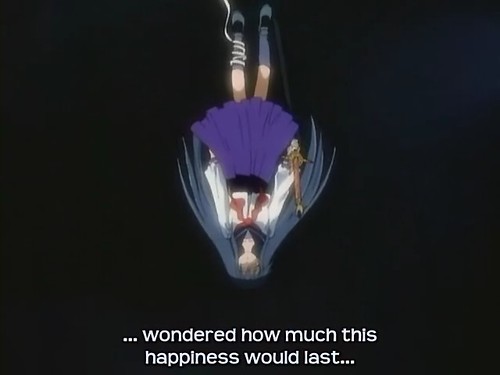Archeofuturism is a book by Guillaume Faye, published by Arktos in 2010. It was originally published in French in 1998. While the underlying principles remain as valid as ever, many of the predictions and examples feel dated. Old Grandfather Modernity has shown a remarkable tendency to cling to life while even on his deathbed. The work itself is more a collection of essays than a coherent whole.
The writing itself reminds me of Hakim Bey, though without the lengthy paeans to self-indulgence and pedophilia. The extensive footnotes the translator and editor felt necessary for understanding the work remind me of Ezra Pound. There are worse things to which one could be compared. The text is divided into six sections: a short biography detailing why he left, and his differences with, the European New Right; an explanation of Archeofuturism and how it will allow us to navigate the Catastrophe (more on this later); a collection of position papers and musings (by far the longest section of the book); an outline of his proposal for an economic system; a discourse on questions of ethnicity; and, finally, a short story outlining a day in the life of an official in his future Archeofuturistic world.
The Catastrophe, if I understand Faye’s thought, is the impending crash of the world system as the various socio-economic crises come to a head. While I agree, broadly, with his assessment of the unsustainable nature of Western Civilization/Modernity, looking back on his predictions, they have not progressed as quickly as he thought they would. Modernity has proven more elastic and adaptable than predicted. The strain is visible, the disorder rampant, but entropy has not yet brought down the system. My children, or my grandchildren, may see the dissolution of the modern world, but I am doubtful it will occur in my lifetime.
I am not an economist, but his dual tiered system, whereby the majority of humanity lives in a pastoral low-tech environment and an administrative elite live a high-tech one, strikes me as unworkable. On one hand, it does seem that it would provide the desired sustainability, but I doubt that the low-technology people will be so acquiescent. I am unsure how the Archeofuturistic world would avoid resentment from the have-nots toward the elites. Then again, it reminds me of the book Gather, Darkness by Fritz Leiber, and I might very well be too indoctrinated by Modernity to imagine a world where people have not been indoctrinated to resent those who are more successful, powerful, etc.
Frankly, the whole thing came across as a bit confused and muddled. I agree with the basic premise that the past is a guidepost for incorporating the future, and I can grasp the benefits of the dialectic of merging traditional life with the modern. Archeofuturism is meant to be the child of this union, but like any sonogram, the picture seems to be a bit fuzzy.
I do have his other works. As I read them, I will see if things become more clear. I’ll get back to you…
Saturday, February 4, 2017
Archeofuturism by Guillaume Faye
Saturday, September 24, 2016
Book Review: Living Thelema by David Shoemaker
Since it is a review of an occult book, the actual review is in my occult blog "A Devil With Unity". I hope you enjoy.
Wednesday, April 29, 2015
Pieta [Manga][Lililicious]
Pieta is a one volume manga written by Haruno Nanae in 1999 that describes the romantic relationship between two women. The author develops a narrative where the two women are different, though not because of their lesbianism, which sets them apart from others and draws them toward each other. This is done in order to demonstrate an almost Nietzschean dichotomy between, in Nietzsche’s terms, the herd and the Übermensch. It is a work aimed at a popular market and should be enjoyed by young adults and older.
While I shall avoid retelling the story, there may be spoilers, so read at your own risk. The plot is fairly straightforward, two hurt girls (they are in high school) find each other, overcome their trials, and become each other’s support in a somewhat hostile world. The cast involves the two main characters (Sahoko and Rio), Rio’s abusive parents, Rio’s therapists (a husband and wife), Sahoko’s aunt, and various miscellaneous characters, mostly culled from Sahoko and Rio’s all girls school. The art is simplified and a bit stiff, with the character’s often looking unnatural. The power of this work comes from its story, not from its art. This isn’t to say that the artwork is bad, it just isn’t that good.
The main characters are Sahoko and Rio. Rio was abandoned by her mother after her younger sister died. Her father is unsure of her paternity, so he is distant and fails to protect her. Shortly after Rio’s mother left, he remarried to a woman who detests Rio and constantly inflicts psychological damage on her. This results in Rio becoming suicidal, isolated, and unable to engage with other people in normal relationships. Sahoko comes across as normal, if reserved. However, she is overly sensitive and finds immersion in normal social relationships so draining that she withdrew from society. They are depicted as polar opposites, one who is disintegrating because of a lack of nurturing and another who disintegrates through an over abundance of love.
Narrative function is provided primarily through Rio’s therapists, an earnest couple who care for Rio as if she were their own child. Once it comes to light that Rio’s nearly successful suicide attempt had been manipulated by Rio’s stepmother, we are provided with an interesting dialog on how certain people are intrinsically different from the rest of the herd. The manga describes the therapists’ first impression of Rio (who was a grade schooler walking herself to her session) as being “a little silver unicorn mixed in with a herd of chestnuts.” This intrinsic difference causes people to react in various ways. The therapists like those with an unique nature and are drawn to these types of beings. Rio’s stepmother sees them as a dangerous other which needs to be destroyed. Here we see a straightforward depiction of Nietzsche’s accounting of the dynamic between the Übermensch and the herd, including how the Übermensch draws others to them by force of their will, and the ressentiment the herd feels for the other. The manga even describes Rio and Sahoko’s condition as an evolutionary step which reinforces the Nietzschean tone.
I don’t mean to imply that the work is some manga equivalent to Thus Sprake Zarathrustra. My reading of Nietzschean elements may be nothing more than my interpretation of the work, though I don’t feel as if I am projecting things that are not altogether present. The manga also contains elements which are not in keeping with the typical Western interpretation of Nietzsche. One of these is the nature of the relationship between Rio and Sahoko. It is extremely close and interdependent. They need each other. The nature of the relationship is, according to Takeo Doi, typical of Japanese relationships which have an ideal form based on the nurturing relationship between a parent and child. This is called amae. The indulgence and occasional childishness of the relationship serves to show, within a Japanese societal context, how close and perfect their love is. Personally, I am unsure whether such relationships are counter to the Nietzschean spirit, or whether they are merely another type of alliance between Übermenschen who will it to be so.
It should also be noted what role family plays in Pieta. The families of Rio and Sahoko have a negative effect on both of them. The negative role of Rio’s family is obvious with the hatred of Rio’s stepmother seeking her eradication, but Sahoko’s is far more subtle. Her family loves her and she loves them. Her love compels her to try and fulfill her role as daughter, even though her parents are not trying to force such a role on her. As the therapists say, “An environment that the typical child would thrive in was just a burden to her.” Normal love, to these others, is just as dangerous as hatred. I read this as the love of the herd, even when provided with no malice or intent to harm, is poison for the Übermensch.
Pieta is one of my favorite mangas. It tells a compelling story about the growing love between two women without it being solely about their lesbianism. They are Übermenschen who happen to be lesbians, not Übermenschen because they are lesbians. It also avoids the juvenile Randian trap so common in pseudo-Nietzschean works. The cultural nods toward karma may also be off-putting for those who are not familiar with Japanese culture. However, the work is definitely worth a read.
I used the translation provided by Lililicious. According to Baka-Updates, it has not been released in English.
21:18: Minor edits to clarify prose & correct erroneous use of apostrophes.
Thursday, October 13, 2011
Kamitori Japanese Restaurant
Kamitori Japanese Restaurant
1044 Willamette St.
Eugene, OR 97401
I arrived about 6pm on a Thursday, so their "Happy Hour" was in effect. Let me first point out that if I ask for Green Tea, you should tell me if you intend to serve me some Green Tea/Wild Rice Tea blend. I can't stand the Wild Rice Tea, and now I know what that abomination was that I accidentally bought in Japan two years ago. This set the tone for the entire meal, so I may be a bit harsh.
To back up a bit, when I, with my three children (9-14) entered, we were greeted (much like with an actual restaurant in Japan) and seated. It took longer than I expected to receive waters and menus. My children ordered we ordered Teriyaki Chicken, Garlic Chicken, Garlic Salmon & Tonkatsu. These were sets, so we weren't allowed to swap the California Roles for something we liked and my youngest child (who likes crab) ended up with 12 California roll sections. I also ordered two sushi rolls for my youngest & I to eat as an appetizer. Our water seemed disaffected and put off in a hipster/metrosexual/effete kind of way, like we were bothering him in expecting food and stuff. I did speak with the other waiter a bit and he seemed to not hate his customers.
The sushi arrived first. It was good. The portions were a bit small (the rolls were of a smaller diameter than I am used to) but the ingredients were fine. The rice was nice and sticky but not hard (sushi rice should not crunch). I never get overly excited about rolled sushi, but my son prefers it since he sucks with chopsticks.
The food arrived. I was very surprised at a "authentic" Japanese restaurant not including rice with the meals. Actually appalled was more like it. I requested some rice to go with the meal.
The reports for the Teriyaki and Garlic Chicken put them as Good. Both children who tried the Garlic Chicken are raving about it. The Teriyaki Chicken was good, if not as spectacular as the Garlic Chicken. My Tonkatsu was dry. I was less than impressed -- bear in mind that I was in a bad mood because of the tea & the wait. However, the Garlic Salmon that I stole from my sons plate was very good. If the Garlic Tempura for the Salmon is the same as that for the Chicken, I can understand why my other two children liked it so much. The Garlic Salmon was light and flaky, as Salmon should be, and not the least bit over-cooked as was my Tonkatsu.
Other than the horrible tea, the Happy Hour Sets came with a drink. I had the house sake, which was passable, if not spectacular. House sake is much like any other house alcohol, and I find that I am often tired of drinking it by the time I am 2/3 of the way down the bottle. Kamitori bypassed this issue by providing a bottle of about half the size.
Wednesday, January 2, 2008
Maria-sama ga Miteru (The Virgin Mary is Watching You) Season 1
Fansub Anime: 13 episodes + 7 Omake bonus "out-takes"
Original Air Dates: 2004-01-07 to 2004-03-31
Page at Anime News Network
Rating: Recommended
Marie-sama ga Miteru is set in a French Catholic Girls School in Japan. It is traditional for the senior students to mentor the younger. They refer to each other as sister. The story revolves around the Rosas who are the leaders of the student body (or Yamayurikai), their petite soeur's (called Rosa Boutons) and the Bouton's petite soeurs.
The initial story arc deals with Sachiko (Red Rose Bouton) and Yumi (unattached first year). Seems Sachiko, for various reasons, dislikes men (later episodes/seasons show that this is a phobia level issue). She is the lead for the school play (Cinderella) which will be borrowing the Prince from Handera's Boy School. The Roses agree to let Sachiko quit the part of Cinderella if she can get Yumi to agree to be her petite souer. The catch is that insecure first year Yumi will have to play Cinderella in her stead. You can guess most of what happens, however it is done rather well, so even though you are sure that it will all work out, you find yourself watching just to make sure.
Due to the airing schedule in Japan, the next arc is set for Valentine's day, the main conflict is in the form of a girl from Sachiko's past who cannot understand why Yumi is Sachiko's petite souer. concurrent with this is a treasure hunt where the entire school is searching for each of the bouton's cards. Finding the card will give the winner a half-day date with the bouton whose card you find. After this we skip back to Christmas where we learn about Sei's past. Sei is one of the few overtly lesbian characters. After this we skip forward again to the dates. Marie-sama ga Miteru covers Summer/Autumn through Winter.

Yumi (from the opening sequence)
The artwork took me off guard for a bit. It was far more angular than I am used to seeing, which gave an initial impression of coldness. However, some of the drawings were very endearing and as I became accustomed to the style I came to really appreciate it. Then again I tend to like pale angular women. I first heard of this anime as an example of Yuri (girl-love/lesbianism). While in other series, such as Nanahoa, their are lesbian characters, the love between the girls is the primary storyline of Maria-sama ga Miteru. Some of the characters are lesbians, some are not, however love between women is the central theme. This is not Hentai. For the most part, the relationship struggles seem identical with heterosexual relationships -- except no one seems upset when they sleep over at each others houses.
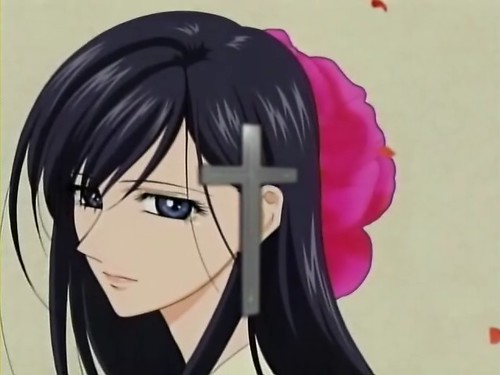
Sachiko (Opening Credits)
In addition to the 13 episodes, there are seven bonus sequences from the DVD's. They are in the Omakechibi style and are "bloopers" for the main series. Several of them had me laughing hard. Which is probably because the series had been so touching. One annoyance here is that I have only been able to get episodes 2-7.

Yumi and Sachiko
Saturday, December 22, 2007
Beowulf
Movie: Theatrical Release
Release: 16 November 2007 (USA)
Page at IMDB
Rating: All Right
A friend of mine took me to see Gaimon's adaption of Beowolf. I found the adaption to be more entertaining than the written story (old English is not something I enjoy reading), and far better than any adaption I have seen to date. The CGI was quite impressive, I often found myself forgetting that the characters on the screen were not real people. When Angelina Jolie appeared, I was immersed enough that I reacted as if the actual person were present on the screen.
One of the big selling points for the movie was that it was in 3-d. They issued some glasses which fit fairly well over my own, however I really didn't see what was added by the effects. For the most part the effects annoyed me as they kept appearing in my lower periphery, an event which distracted me from the movie as I continually turned my head to locate the new "threat."
I recommend seeing this movie, on DVD, though I didn't feel ripped off from having seen it in the theater.
Monday, December 17, 2007
Yami to Boushi to Hon no Tabibito
Fansub Anime: 13 episodes
Original Air Dates: 2003-10-02 to 2003-12-25
Page at Anime News Network
Rating: All Right
You know the standard plot device where boy loves girl, boy loses girl, so boy goes in search of girl? Well, this 13 episode anime has a similar plot basis, except that the girl is actually "Eve," the trans-dimensional mother of all humanity, & she has been traveling the universe for some time. The plot is complicated by Eve's sister being annoyed at having to watch the "Library", where every book is a world, while her sister plays. Another complication is Gargantua, who killed Eve when she was on his world and who has dedicated himself to capturing her as the supreme source of eternal life. Oh yes, the final wrinkle is that the boy doing the searching as actually a girl named Hasuki. Evidently, Japanese lesbians are just as angst ridden as Japanese men.
This anime is another adaption from a game. The translator's notes explain that the anime can be difficult to follow without the background information. Thankfully, it then gives the background info. I did not find it very compelling for the first 5 episodes. I enjoyed the artwork and the story was good enough -- or perhaps it was because it was the Yuri -- so I persevered. Episode six is where it all gelled together, the plot threads unified and I found that I had to finish watching the anime (by staying up until 2:30 am).
The synopsis is fairly simple, it is derived from a game after all. A force called Adam created reality. Riseru was created to manage it. Adam wanted people so he created Eve who caused people to populate the dimensions. After this, the gods arose and started warring, so the great library was created to preserve the worlds. Each book in the library is another world. Yami was created to care for the library.
Evidently, Eve became bored and left the library to incarnate in the various worlds. Being the source of life, she imprints each world rather strongly. Her older sister Riseru is upset at having to work while Eve is playing and sets out to force her to return. Eve is only present in each world for 16 years. At midnight, when she turns 16, she dematerializes, unless she is killed before that, in which case she dematerializes when slain.
The adventure starts out with Hatsuki trying desperately to show her love for Hatsumi, who is Eve's incarnation in her world. Her frustration causes her to act erratically at times. Later episodes show that both characters are having troubles admitting to the other how much they love each other. Hatsuki is present in Hatsumi's bedroom when midnight strikes and sees Hatsumi disappear. Shortly thereafter a fat parakeet, who is Riseru's agent, appears. Thus begins the quest across dimensions for Hatsuki to find her lost love, Hatsumi.
The other thread involves Gargantua who desired Eve's power of life. He knew her as Jira. While acting rashly, he stabbed Jira, thus ending her life. He deals with his guilt by dedicating himself to capturing the source of eternal life (which he later discovers is Eve/Jira). He and another girl, who was present when Jira was slain, have a form of immortality. In his pursuit, he offers a soul to Riseru (who has the hots for him). She promised him Eve, but since she cannot give him that, she gives him a "blank book" which is a dimension that he can create from his imagination. From here he searches for Eve.
Redemption, re-evaluation and the like figure prominently, as does the idea of love for that which is unattainable. The ending was odd, a bit unsatisfying, but not overwhelmingly so. All Right.

